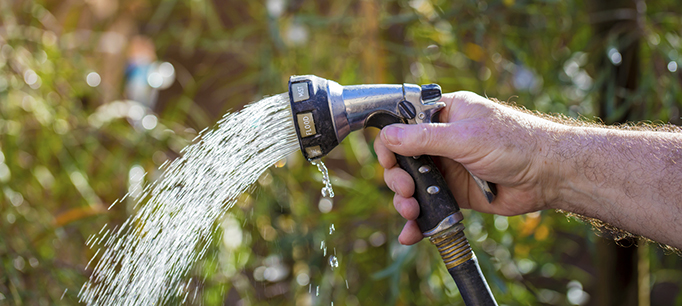The start of the new “water year” has brought mixed messages to drought-stressed Californians—from above-normal rains in the northern part of the state to lingering drought in the southern half. But whether you live in the wet or dry part of the state, everyone can use a refresher course on what the drought means for our water supply. The answers are here. (Bonus question: What is a water year?)
1. Californians have experienced both mandated and voluntary calls for water conservation during this drought. For a family living in an older single-family-home, which of the following could bring the biggest reduction in water use?
A. Replace old showerheads with low-flow ones
B. Remove the lawn
C. Replace an old toilet with a water-efficient one
2. Water use in cities and suburbs has been declining for many years. What was California’s per-capita water use in 2015 (the fourth year of the latest drought)?
A. 175 gallons per day
B. 130 gallons per day
C. 55 gallons per day
3. Toxic algal blooms have become more common in California waterways in recent years, causing lake and beach closures, poisoning pets and sea life, and posing human health risks. What causes them?
A. Warmer water temperatures
B. Nutrients in the water from farms, treated sewage, and urban runoff
C. Lower flows into lakes, wetlands and estuaries
D. All of the above
4. How much surface water did Central Valley farms receive in 2015 compared to a year with normal rainfall?
A. Most farmers received the same amount.
B. They got 25% less—the statewide conservation mandate
C. They got about half of normal allocations
5. How was California’s energy supply affected by the drought?
A. Since it takes energy to supply, treat, and heat water, California households saved significant amounts of energy by using less water.
B. Some inland power plants faced water shortages that threatened their cooling-water supply
C. Hydropower production was cut in half due to reduced snowpack and runoff into reservoirs
D. All of the above
6. To help us address future shortages in urban areas, which of the following new water supplies would be the least costly to develop?
A. Building seawater desalination plants
B. Recharging groundwater with urban stormwater or treated wastewater
C. Making wastewater clean enough to drink
D. Enacting water efficiency programs, such as those to replace wasteful indoor water fixtures and appliances, and thirsty lawns
7. The ongoing drought has pushed many already troubled freshwater species to the brink. How many of California’s 122 species of native fish are now at near-term risk of extinction?
A. 12
B. 18
C. 27


